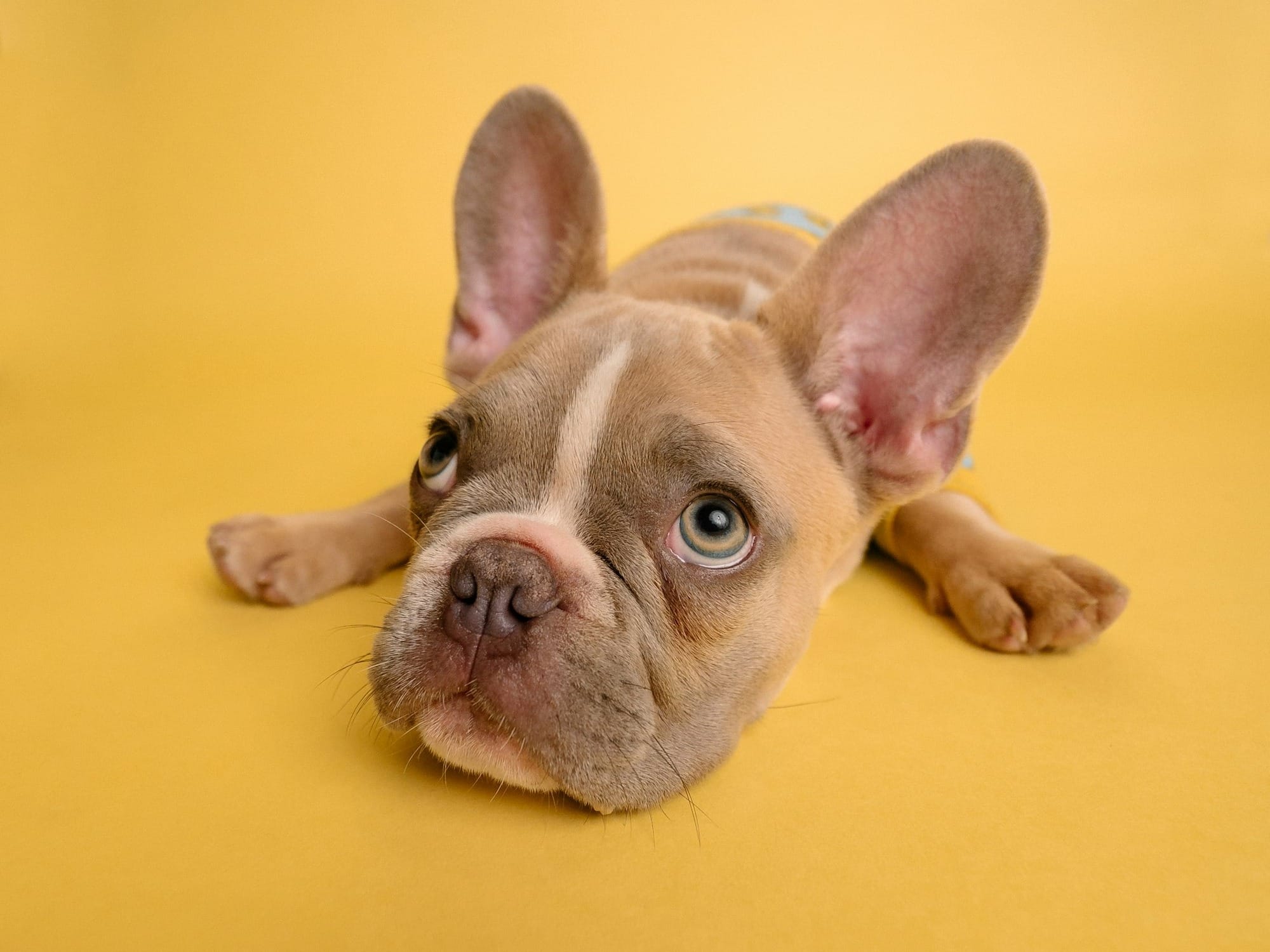Why is My Dog Staring at Me?
Ever wonder what’s going on in your dog’s brain when they stare at you like a lovesick puppy—or a snack thief? In this post, we’ll explore the psychology behind their quirky behaviors, from affectionate gazes to “I want something” stares. Get ready to laugh, learn, and decode your furry friend!

- Signs Your Dog is Zoning Out
- Signs Your Dog Loves You
- Signs Your Dog Wants Something
- How to Tell the Difference
- What Should You Do
Signs Your Dog is Zoning Out
While dogs don’t daydream like humans do, they can zone out or appear lost in thought. This usually happens when they’re resting or quietly observing their surroundings. Look for:
- Vacant Stare: Their gaze might seem unfocused or directed at nothing in particular.
- Relaxed Posture: Their body will be loose and calm, not tense or alert.
- No Interaction: They won’t try to engage with you—they’re simply existing in the moment.
- Environmental Awareness: Dogs often appear to “daydream” when they’re taking in smells or sounds around them without reacting immediately.
Key Context: If they’re staring into space without engaging with you or anything specific nearby, they might just be zoning out.
However, if the stare seems vacant or is accompanied by confusion or unusual behavior (like disorientation), it could indicate a health issue like canine cognitive dysfunction syndrome. In such cases, consult your vet.
Signs Your Dog Loves You
Dogs often stare at their owners as a sign of affection. This kind of gaze is soft and relaxed, and it triggers the release of oxytocin—the “love hormone”—in both you and your dog. It’s similar to the bond between a parent and child. If your dog is lying down or wagging their tail while staring, it’s likely an expression of love and trust.
Look for these signs of affection:
- Soft, Relaxed Eyes: Their gaze is gentle, with no tension in their face. Their eyes might even look a little droopy.
- Relaxed Body: Their body will appear calm—no stiff posture or fidgeting.
- Wagging Tail or Calm Posture: They might be lying down, sitting comfortably, or wagging their tail slowly.
No Immediate Need: If they’ve already been fed, walked, or played with, they’re likely just enjoying your presence.
Oxytocin Gaze: Studies show that mutual gazing between dogs and humans releases oxytocin (the "love hormone") in both of you. If you feel warm and fuzzy looking back at them, it’s probably mutual love.
This kind of affectionate stare often happens during quiet moments, like when you’re relaxing together on the couch or after some quality bonding time.
Signs Your Dog Wants Something
Dogs are smart! They’ve learned that staring can get your attention. If it’s close to mealtime, walk time, or they’re eyeing your snack, they’re likely trying to communicate their needs.
Here’s what to watch for:
- Alert Expression: Their ears might perk up, and their eyes will look wide and focused, as if they’re waiting for you to act.
- Whining or Barking: They may add vocal cues to get your attention.
- Pawing or Nudging: Along with the stare, they might tap you with their paw or nudge you with their nose.
- Looking Back and Forth: If they glance between you and something else (like the door, their food bowl, or a toy), they’re trying to show you what they want.
- Timing Matters: If it’s close to mealtime, walk time, or playtime, the stare is probably a polite (or not-so-polite) reminder.
This kind of stare usually has a sense of urgency—it’s like they’re saying, “Hey! I need something right now!”
How to Tell the Difference
Ask yourself these questions:
- What’s going on around us?
- Is it close to mealtime? Are you holding food? If yes, they probably want something.
- Is it a quiet moment together? That could mean affection.
- Are there no clear triggers? They might just be zoning out.
- How does their body look?
- Relaxed = affection or zoning out.
- Alert and focused = wanting something.
- Are there extra cues?
- Pawing, whining, or looking at objects suggests they need something.
- No additional cues likely mean affection or restfulness.
By paying attention to these subtle differences in body language and context, you’ll become better at understanding what your dog is trying to communicate—and deepen your bond in the process!
What Should You Do?
- If it’s love: Enjoy the moment! Stare back softly to strengthen your bond.
- If they want something: Decide if it’s the right time to meet their need. If not, gently redirect them with commands like “sit” or “wait.”
By paying attention to context and body language, you’ll become an expert at decoding your dog’s stares—and deepen your connection in the process!

